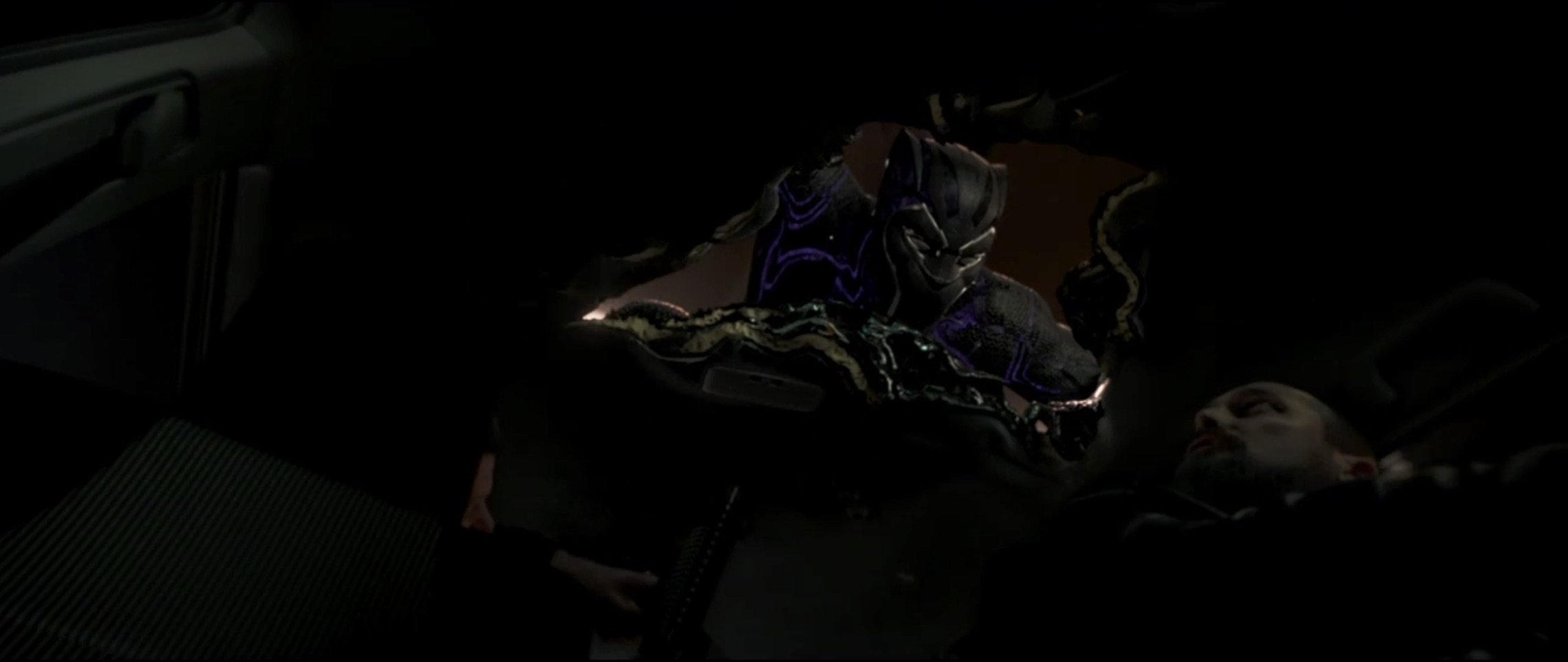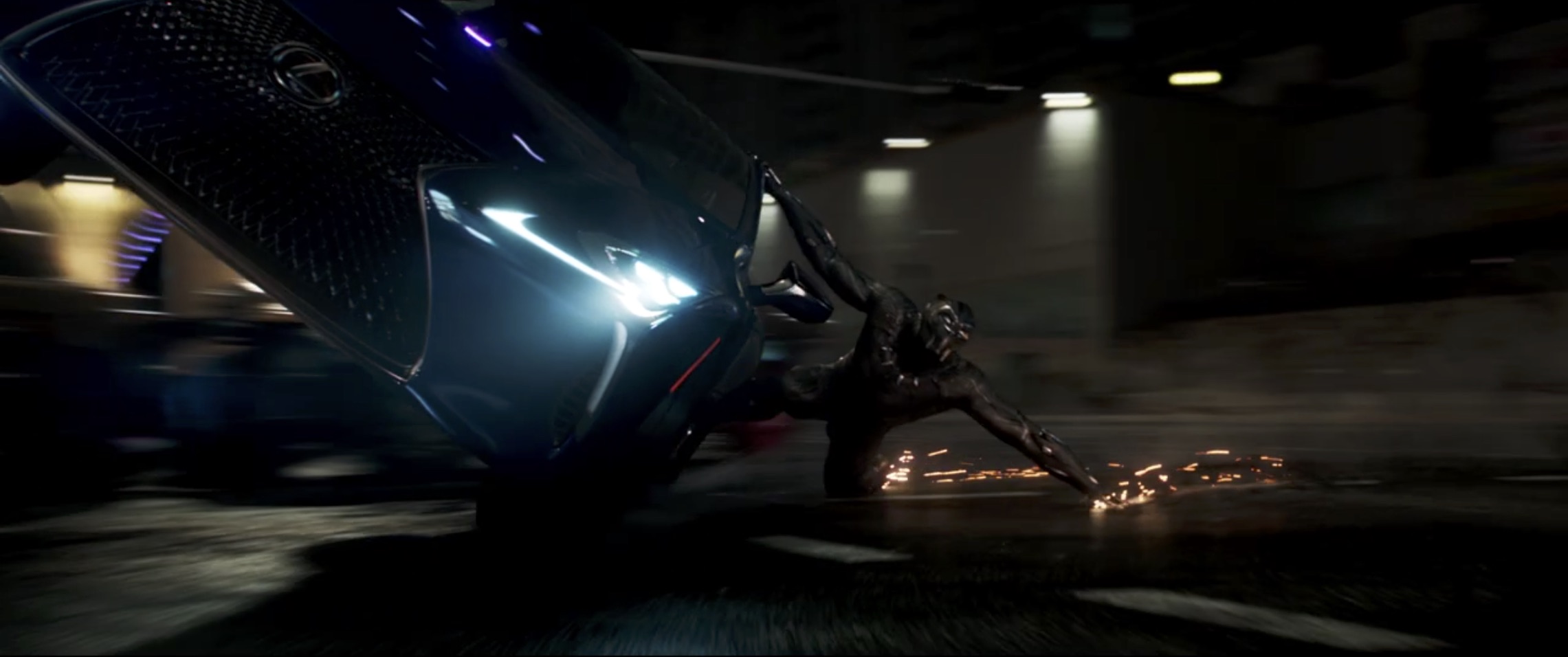Media | Articles
You’ll flip over the chase scene in Black Panther
In a hidden South Korean casino, a king (T’Challa), a spy (Nakia), and a warrior (Okoye) are on a mission. They are there to extract Wakanda’s Most Wanted: Ulysses Klaue, who stole vibranium from their country 30 years prior, killing Wakandans in the process. He’s just stolen more vibranium from a museum, and Wakandan intel suggests he’s in Busan to sell it.
While T’Challa surveils the gamblers, he runs into “an old friend” playing craps: CIA agent Everett Ross, who also happens to be the buyer for the vibranium, ready to trade a briefcase full of diamonds. Klaue shows up, goons in tow. Okoye betrays her true identity when she accidentally speaks Xhosa on her communication device, and Klaue’s men come for her. She throws her staff and her wig, Nakia hits a man in the face with her high heel, and T’Challa kicks one of Klaue’s goons so hard he flies into the bar. The mission doesn’t exactly go as planned.
Black Panther stars Chadwick Boseman as T’Challa, the new Black Panther and king of Wakanda after the death of his father T’Chaka in Captain America: Civil War. Wakanda is secretly the most advanced country in the world, rich in vibranium, an idyllic place untouched by colonizers, but the rest of the population believes Wakanda is a third-world country. The film’s antagonist, Erik Killmonger (Michael B. Jordan), is T’Challa’s cousin, Wakandan royalty born and raised in Oakland, and kept a secret by T’Challa’s father. He brings Wakanda’s only real shortcoming into sharp relief: its failure to help its people outside its borders. “The theme of the film is, ‘Am I my brother’s keeper?’ Each character has a different answer to that question and only one changes his answer,” filmmaker and co-writer Ryan Coogler explained. T’Challa must deal with the consequences of his father’s choices, and ultimately decide what kind of leader he’s going to be, whether he’ll honor tradition or find a new way forward.
Black Panther is a unique Marvel film with a unique antagonist: Killmonger isn’t an all-powerful supervillain to be fought and defeated, he’s a human being to empathize with, and to learn from. According to Coogler, “T’Challa’s superpower is that he knows who to trust.” That superpower includes his ability to listen and learn, to judge right from wrong, to understand that he doesn’t know everything. Black Panther bears the influence of The Godfather, The Lion King, Jacques Audiard’s A Prophet, Afrofuturism, even Milton’s Paradise Lost. It’s Marvel’s version of a James Bond film, with the prelude to its chase taking place in the very Bond-esque Busan casino.
Marketplace
Buy and sell classics with confidence
Ryan Coogler and cinematographer Rachel Morrison conceived the film’s car chase, then second-unit director and stunt coordinator Darrin Prescott executed it over the course of nine days with the help of Igor Meglic. (Prescott’s impressive credits include but are not limited to Drive, John Wick, The Bourne Supremacy, and Baby Driver.) The chase begins at Jagalchi Market, crosses Gwangandaegyo Bridge, and ends in Haeundae District. Shooting this scene reportedly involved over 700 people and 150 cars, and Lexus bravely provided six hand-built (and expensive) early prototypes of the Lexus LC 500, before the script was even finished.



Since Nakia (Lupita Nyong’o) lost her shoes in the casino brawl, she drives a Lexus GS F barefoot, with Okoye (Danai Gurira) as her passenger, in pursuit of Klaue (Andy Serkis) and his men, who split up in four Toyota 4Runners in the neon streets of Busan. T’Challa follows, his tuxedo transforming into his suit. His teenage sister Shuri (Letitia Wright), remotely drives an iridescent blue Lexus LC 500 from back in her lab in Wakanda, and T’Challa rides on top of it. Klaue commands one of his goons to turn on the radio—“What do you think this is, a funeral?”—and “Opps” by Vince Staples and Yugen Blackrok plays. Klaue’s men try to shoot Nakia’s and Okoye’s car, but it’s made of vibranium, impenetrable. Okoye is not impressed: “Guns. So primitive.” Okoye gets out of Nakia’s Lexus to stand on the roof and throws her staff through the car in front of them, which lands in front of the Toyota, causing it to crash and flip.
T’Challa is almost never inside a car—he’s usually jumping from car to car, surfing on their roofs, ripping them open like tin cans, scaring one goon so bad that he jumps out of the car. T’Challa maneuvers Shuri’s Lexus, helping it to turn a corner by tipping it on its side, making sparks fly. Shuri reminds T’Challa that his suit, which has been taking bullets, is charged with kinetic energy—and he uses it to send Toyota 4Runner tumbling, an exhilarating CG shot that went through 214 iterations.


Klaue hangs out of the Toyota’s window, delivering a sonic blast with his fancy vibranium arm to Nakia’s and Okoye’s Lexus, blasting it to pieces. In a moment that proves Okoye is the MVP of this chase; she flies through the air, grabs her staff, and uses it to pin a bit of scrap metal, which she surfs down the street to safety. Nakia skids to a stop beside her, still buckled in and holding the wheel. Everett Ross (Martin Freeman) appears to offer them a ride, reuniting them with T’Challa, who has captured Klaue after tearing one of his Toyota’s wheels off, sending the SUV flying. T’Challa threatens Klaue in front of a crowd, and it’s Okoye and Nakia who talk him down.
The physics-defying Toyota flip and T’Challa in his Black Panther suit are CG for obvious reasons, and some of the stunts were animated over, but most of the chase was done practically, including the big crash. And although cars fly over hilly streets like in Bullitt, this chase feels singular. Ryan Coogler explained, “The whole idea for this scene is we wanted to have a car chase that was unlike any car chase we had seen before—combining the technology of Wakanda and juxtaposing that with the tradition of this African warrior culture. In our film, we kind of broke down characters between traditionalists and innovators.” And innovators Nakia and Shuri are paired with traditionalists T’Challa and Okoye during the chase for a reason: they complement each other.




The chase maintains tension, never loses its sense of fun, and gives us one of the film’s most iconic, beautiful images: Okoye surfing on top of the Lexus, red dress flowing, spear in hand. The chase is a spectacle, but more importantly, it tells us about the characters and their relationships, how each of them is unique, yet unified. Although Nakia and Shuri are undoubtedly the best drivers in Black Panther’s chase, it isn’t really about who the most skillful drivers are, it’s about who’s the most united.
Regardless of whether they’re an innovator or a traditionalist, Nakia, Shuri, T’Challa, and Okoye operate on the same wavelength, communicating constantly whether they’re in the car, on the car, or in a different country, and they are infinitely more thoughtful and strategic than their opponents, who are reckless and divided. It’s just as T’Challa says to the United Nations at the film’s end: in times of crisis, the wise build bridges, and the foolish build barriers. T’Challa advises, “We must find a way to look after one another as if we were one single tribe.”









